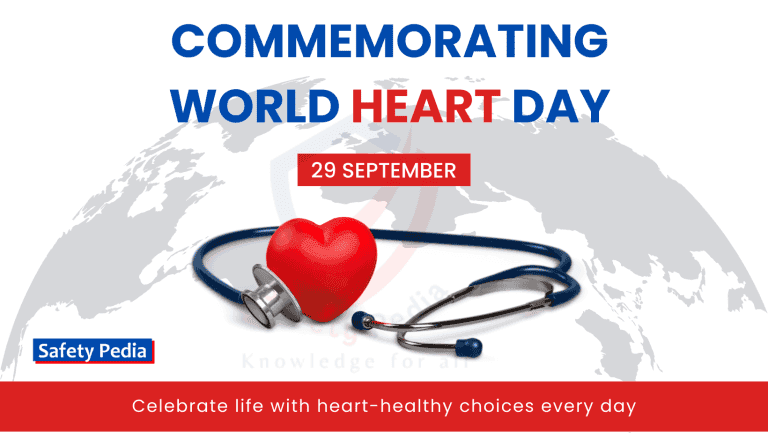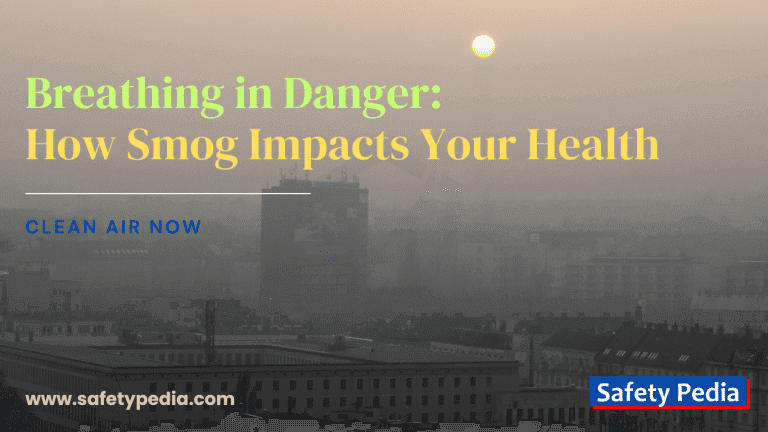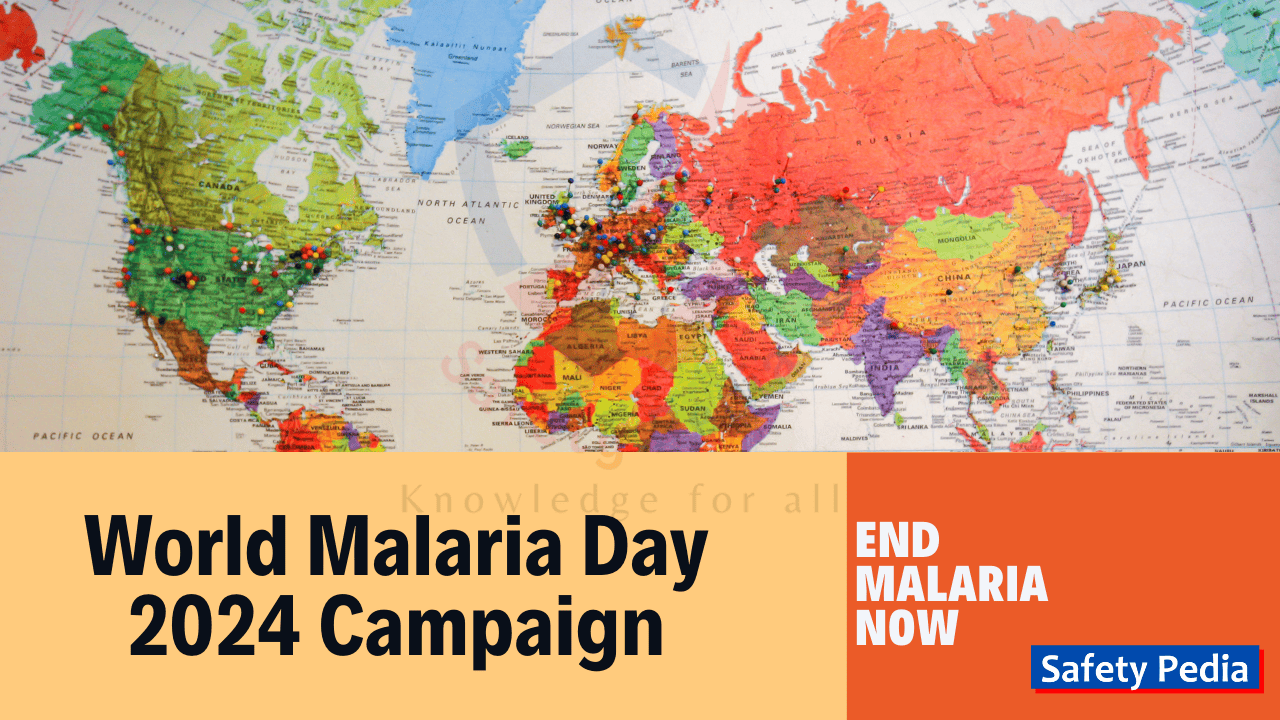
Introduction: World Malaria Day 2025
As we celebrate World Malaria Day 2025, there is a renewed sense of urgency to take action and end this deadly disease. The 2023 global malaria data presents a concerning picture, highlighting both persistent challenges and areas requiring urgent attention.
Malaria remains a significant global health hazard, with an estimated (World malaria
report 2024) 263 million cases and 597,000 deaths reported across 83 countries in 2023, indicating that malaria remains a significant public health crisis. This represents a slight increase in cases from 2022 (252 million), suggesting that control efforts may face setbacks or new challenges.
African Region Disparity:
The WHO African Region’s disproportionate share of the global burden, with 94% of cases and 95% of deaths, underscores the severe impact of malaria in this region. This reinforces the need for targeted and intensified interventions in Africa. Factors such as access to healthcare, environmental conditions, and socioeconomic factors likely contribute to this disparity.
Child Vulnerability:
The fact that children under 5 account for 76% of malaria deaths in the African Region is deeply alarming. This demonstrates the extreme vulnerability of young children to malaria and highlights the critical need for prioritized interventions aimed at this age group, including preventive measures and access to prompt treatment.
Country-Specific Impact:
The concentration of over half of the deaths in Nigeria, the Democratic Republic of the Congo, Niger, and the United Republic of Tanzania signifies that these countries require immediate and focused attention. This data points to areas where healthcare systems may be overwhelmed or control measures are less effective. Targeted interventions, tailored to the specific challenges in these nations, are crucial.
Death Rate Improvement:
Although the number of malaria cases has increased, the number of deaths has slightly decreased. This could result from better treatments and more people accessing those treatments. However, the fight is far from over.
This year, global leaders, health experts, and activists are coming together to create a call to action to drive progress and make a lasting impact. We can bring about significant change by boosting funding for research, improving access to prevention and treatment, and increasing awareness about the importance of malaria control.
The theme for World Malaria Day 2024, “Accelerating the fight against malaria for a more equitable world”, highlights the need for immediate and coordinated efforts to eliminate this disease. It is a matter of saving lives, promoting economic development, and ensuring a healthier future for future generations.
In the year 2022, Malaria affected vulnerable populations, causing over 600,000 deaths and 249 million new cases of malaria; 94% of all malaria cases are in the WHO African Region. It is time for a united front in the fight against malaria.
Join us in fighting malaria and advocating for a malaria-free world. Together, we can make a difference and create a healthier future.
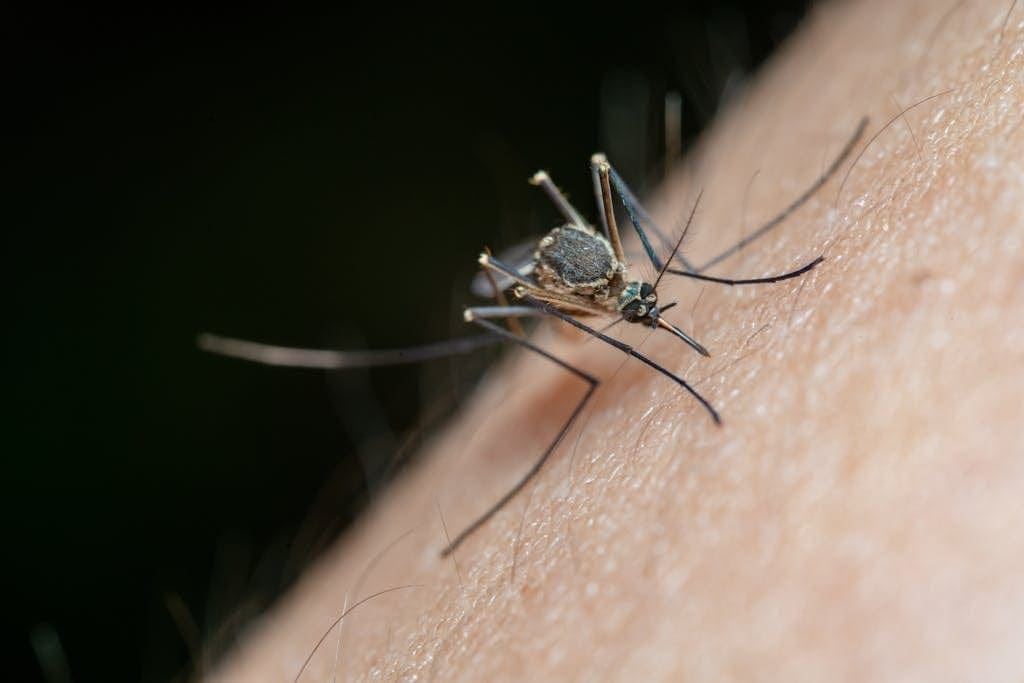
What is Malaria?
Malaria is a life-threatening disease caused by parasites transmitted to people through the bites of infected female Anopheles mosquitoes. It’s a serious global health concern, prevalent primarily in tropical and subtropical regions where the climate is conducive to breeding these mosquitoes.
What are the Symptoms of Malaria?
The symptoms of malaria can vary but typically include a combination of the following:
- High fever
- Shaking chills ranging from moderate to severe
- Profuse sweating
- Headache
- Nausea
- Vomiting
- Diarrhea
- Muscle pain
- Abdominal pain
- Anemia
- Respiratory distress
- Jaundice
- Impaired consciousness
- Convulsions
- Coma
Symptoms usually appear within 10 to 15 days after the mosquito bite. Early diagnosis and treatment are vital to prevent severe disease and reduce malaria transmission.
Causes of Malaria
Malaria is caused by the Plasmodium parasites, with five species causing malaria in humans. The most dangerous of these is Plasmodium falciparum, which is responsible for the high mortality rates associated with the disease. The parasites are transmitted by the bite of an infected mosquito, which introduces the parasites into the bloodstream.
Diagnosis and Treatment
Diagnosing malaria involves identifying the parasite in the blood, which can be done through microscopic examination or rapid diagnostic tests. Treatment should be started as soon as possible and typically involves antimalarial medications such as chloroquine, quinine sulfate, and others, depending on the type of parasite and the area where the infection was acquired.
Preventing malaria involves several measures, including:
- Using insect repellent
- Wearing protective clothing
- Sleeping under insecticide-treated bed nets
New Technologies
The fight against malaria has been a long-standing global health challenge, with the disease affecting millions of people worldwide. However, recent technological advancements have brought forth innovative solutions that are transforming the landscape of malaria prevention, diagnosis, and control. In this blog post, we will delve into the cutting-edge technologies that are making significant strides in the battle against this life-threatening disease.
Diagnostic Tools
Rapid diagnostic tests (RDTs) have revolutionized malaria detection, especially in remote areas where access to laboratory facilities is limited. These tests can provide results within minutes, enabling prompt treatment and reducing the risk of severe complications. Moreover, mobile applications are now being developed to streamline the diagnostic process further. For instance, some apps utilize image processing algorithms to analyze blood samples for the presence of malaria parasites, offering an accessible and non-invasive diagnostic method.
Vector Control Methods
Vector control remains a critical component in the fight against malaria. One of the most promising developments in this area is the use of genetically modified mosquitoes. These mosquitoes are engineered to either be resistant to malaria parasites or to have reduced lifespans, thus decreasing the chances of transmission. This approach, combined with traditional methods such as insecticide-treated bed nets and indoor residual spraying, offers a multi-faceted strategy to control the mosquito population and reduce the incidence of malaria.
Personal Protection Devices
Personal protection against mosquito bites is essential in preventing malaria. Wearable repellents, such as bracelets and patches infused with insect-repelling substances, provide individuals with additional protection. These devices are handy for people living in or traveling to high-risk areas. They are designed to be portable and easy to use, offering protection without the need for sprays or creams.
The integration of these advanced technologies into malaria control programs has the potential to reduce the global burden of the disease significantly. By improving diagnostic capabilities, enhancing vector control methods, and providing personal protection devices, we are moving closer to a world where malaria can be effectively managed and eventually eradicated.
Vaccine Development
Vaccine development has been a critical area of focus in the fight against malaria, offering hope for a future where the disease can be effectively managed or even eradicated.
Current Malaria Vaccines
The RTS,S/AS01 vaccine, known by its trade name Mosquirix, is the first and only malaria vaccine to receive a recommendation from the World Health Organization (WHO) for widespread use. Developed over several decades, RTS,S targets the Plasmodium falciparum parasite, which is responsible for most malaria deaths. The vaccine has been implemented in several African countries through the Malaria Vaccine Implementation Programme (MVIP), demonstrating moderate efficacy in reducing malaria cases in vaccinated children.
New Vaccine Candidates in Clinical Trials
Building on the foundation laid by RTS,S, new vaccine candidates are making their way through clinical trials, promising higher efficacy and the potential to transform the landscape of malaria prevention. One such candidate is the R21/Matrix-M vaccine, which has shown an efficacy of 75% in phase IIb trials, surpassing the WHO’s target efficacy of 75% for malaria vaccines. This vaccine, developed by the University of Oxford, represents a significant advancement in the field and is currently undergoing further trials to confirm its efficacy and safety.
Challenges in Vaccine Development
Despite these promising developments, the road to a highly effective malaria vaccine is fraught with challenges. The complexity of the Plasmodium parasite’s life cycle, its ability to evade the human immune system, and the logistical difficulties of implementing vaccination programs in resource-limited settings pose significant hurdles. Moreover, the need for a vaccine targeting multiple stages of the parasite’s life cycle and offering long-lasting protection remains unmet.
Future Directions
The future of malaria vaccine development is focused on overcoming these challenges through innovative approaches. Next-generation vaccines may leverage cutting-edge technologies such as mRNA platforms, which have proven successful in the rapid growth of COVID-19 vaccines. Additionally, a deeper understanding of the immune response to Plasmodium infection could inform the design of more effective vaccines that offer broader and more durable protection.
The global health community remains cautiously optimistic about the potential of new vaccine candidates to contribute significantly to malaria control and eventual eradication. With continued investment in research and development and robust implementation strategies, the goal of a malaria-free world appears within reach.
As we observe the progress in this field, supporting and accelerating these efforts is crucial, ensuring that the benefits of scientific advancements reach those most in need. The fight against malaria is a collective endeavor, and vaccines are a key weapon in our arsenal to save lives and improve health outcomes across the globe.
Highlight the history of malaria, its impact, and the ongoing fight against it.
Malaria, a mosquito-borne infectious disease, has plagued humanity for millennia. Its story is constant struggle, devastating impact, and ongoing scientific advancements.
A Look Back: The Ancient Foe
- Early Traces: Evidence of malaria parasites has been found in fossilized mosquitoes dating back millions of years. Ancient Chinese medical texts from 2700 BC describe symptoms resembling malaria.
- Global Spread: Trade and travel facilitated the spread of malaria across continents. Malaria was a recognized disease in Europe and North Africa by the Roman era.
- The “Roman Fever”: Malaria’s debilitating effects likely contributed to the decline of the Roman Empire.
Impact of Malaria:
- Devastating Consequences: Malaria causes chills, fever, sweating, and flu-like symptoms. In severe cases, it can lead to coma, organ failure, and death. Children under five and pregnant women are particularly vulnerable.
- Social and Economic Burden: Malaria weakens communities by reducing workforce productivity and straining healthcare systems. High prevalence rates can hinder economic development, creating a vicious cycle.
The Fight Continues: Advances and Challenges
- Early Efforts: Quinine, derived from cinchona bark, became the first effective treatment in the 17th century. However, its availability and affordability were limited.
- DDT and Insecticides: The use of DDT after World War II led to a dramatic decline in malaria cases in the mid-20th century. However, widespread mosquito resistance necessitated a shift in approach.
- Artemisinin-based Combination Therapies (ACTs): These are currently the most effective treatment for malaria, combining different medications to combat resistance.
- Prevention Strategies: Mosquito nets treated with insecticide are vital for preventing bites, particularly during sleep.
- Vaccine Development: Despite ongoing efforts, a widely available and effective malaria vaccine remains elusive, but research continues with promising candidates.
Looking Forward: A United Front Against Malaria
- Global Collaboration: The World Health Organization (WHO) leads the global fight against malaria, setting goals, promoting prevention strategies, and coordinating research efforts.
- Funding and Investment: Sustained financing is crucial for research, development, and deployment of new tools and technologies to combat malaria.
- Community Engagement: Empowering communities with knowledge and resources is essential for effective prevention and treatment.
Malaria may be an ancient foe, but the fight against it is far from over. Through continued research, innovative tools, and global collaboration, the world strives towards a future free from malaria’s burden.
The global impact of malaria
Malaria is a global health crisis that affects millions of people worldwide. According to the World Health Organization (WHO), there were an estimated 249 million cases of malaria in 2022, with the African region bearing the highest burden. This disease causes immense suffering and hampers economic growth and development in affected countries.
To address malaria’s global impact, it is crucial to understand the factors contributing to its spread and the challenges faced in controlling the disease. By addressing these issues head-on, we can make significant progress towards ending malaria once and for all.
Malaria primarily affects low-income countries, where access to healthcare, prevention, and treatment is limited. The burden of malaria falls disproportionately on vulnerable populations, including pregnant women and children under the age of five. It is estimated that malaria will cause over 600,000 deaths in 2022, and the majority of these deaths will occur in young children.
Progress made in the fight against malaria
Despite the challenges, significant progress has been made in the fight against malaria in recent years. Global efforts, such as the Roll Back Malaria Partnership, have substantially reduced malaria cases and deaths. The deployment of insecticide-treated bed nets, indoor residual spraying, and effective antimalarial drugs have played a vital role in saving lives and reducing disease transmission.

Innovative technologies and research have also contributed to the progress made in malaria control. In recent years, new diagnostic tools, such as rapid diagnostic tests, have improved the accuracy and speed of malaria diagnosis. Additionally, developing new antimalarial drugs and potential vaccines offers hope for more effective treatment and prevention strategies.
However, despite these achievements, much work still needs to be done. Malaria remains a significant public health threat, particularly in regions with weak healthcare systems and limited resources. Addressing the remaining challenges and investing in innovative solutions is crucial to sustaining and accelerating progress.
Challenges in ending malaria
Ending malaria is a complex task that requires addressing several challenges. One key challenge is the emergence of drug-resistant malaria parasites. Over time, malaria parasites have developed resistance to commonly used antimalarial drugs, making treatment less effective. This necessitates the development of new medicines and treatment strategies to combat drug-resistant strains.
Another challenge is the limited access to healthcare, particularly in remote and underserved areas. Many affected communities lack access to proper diagnosis, treatment, and prevention methods, making it difficult to control the spread of the disease. Strengthening healthcare systems and improving access to essential malaria interventions are crucial steps towards ending malaria.
Additionally, climate change and environmental factors play a significant role in malaria transmission. Rising temperatures and changing rainfall patterns can create favorable conditions for mosquito breeding, the primary vector for malaria transmission. To address this challenge, it is essential to adopt comprehensive strategies that consider the impact of climate change on malaria transmission and prevention.
The importance of awareness and advocacy
Raising awareness about malaria and advocating for increased action is crucial in the fight against this disease. Many people, particularly in high-income countries, are unaware of its devastating impact on vulnerable populations. Increasing awareness can mobilize resources, funding, and political will to support malaria control efforts.
Advocacy is vital in influencing policymakers and driving policy changes that prioritize malaria control. By engaging with governments, NGOs, and international organizations, advocates can push for increased funding, improved healthcare infrastructure, and the implementation of evidence-based interventions. Advocacy efforts also help in reducing the stigma and discrimination associated with malaria, ensuring that affected individuals receive the support and care they need.
Education and community engagement are essential components of awareness and advocacy efforts. By educating communities about the causes, symptoms, and prevention of malaria, individuals can take proactive steps to protect themselves and their families. Community-driven initiatives, such as distributing insecticide-treated bed nets and promoting indoor residual spraying, have proven effective in reducing malaria transmission.
Key strategies for ending malaria
A comprehensive approach is required to end malaria, addressing all aspects of prevention, diagnosis, and treatment. Key strategies for ending malaria include:
- Vector control: Mosquito control is crucial in reducing malaria transmission. This includes using insecticide-treated bed nets, indoor residual spraying, and larval control measures.
- Access to diagnosis and treatment: Timely and accurate diagnosis is essential for effective malaria management. Improved access to diagnostic tools and prompt treatment with quality antimalarial drugs can save lives and prevent the spread of the disease.
- Prevention in high-risk populations: Pregnant women and children under the age of five are particularly vulnerable to malaria. Providing preventive measures, such as intermittent preventive treatment for pregnant women and seasonal malaria chemoprevention for children, can significantly reduce malaria-related morbidity and mortality in these high-risk groups.
- Research and innovation: Continued investment in research and innovation is essential for developing new tools, drugs, and vaccines. Research efforts should focus on understanding malaria transmission dynamics, improving diagnostic methods, and exploring new treatment options.
- Health system strengthening: Strengthening healthcare systems, particularly in malaria-endemic regions, ensures access to quality care. This includes training healthcare workers, improving infrastructure, and strengthening supply chains for essential malaria interventions.
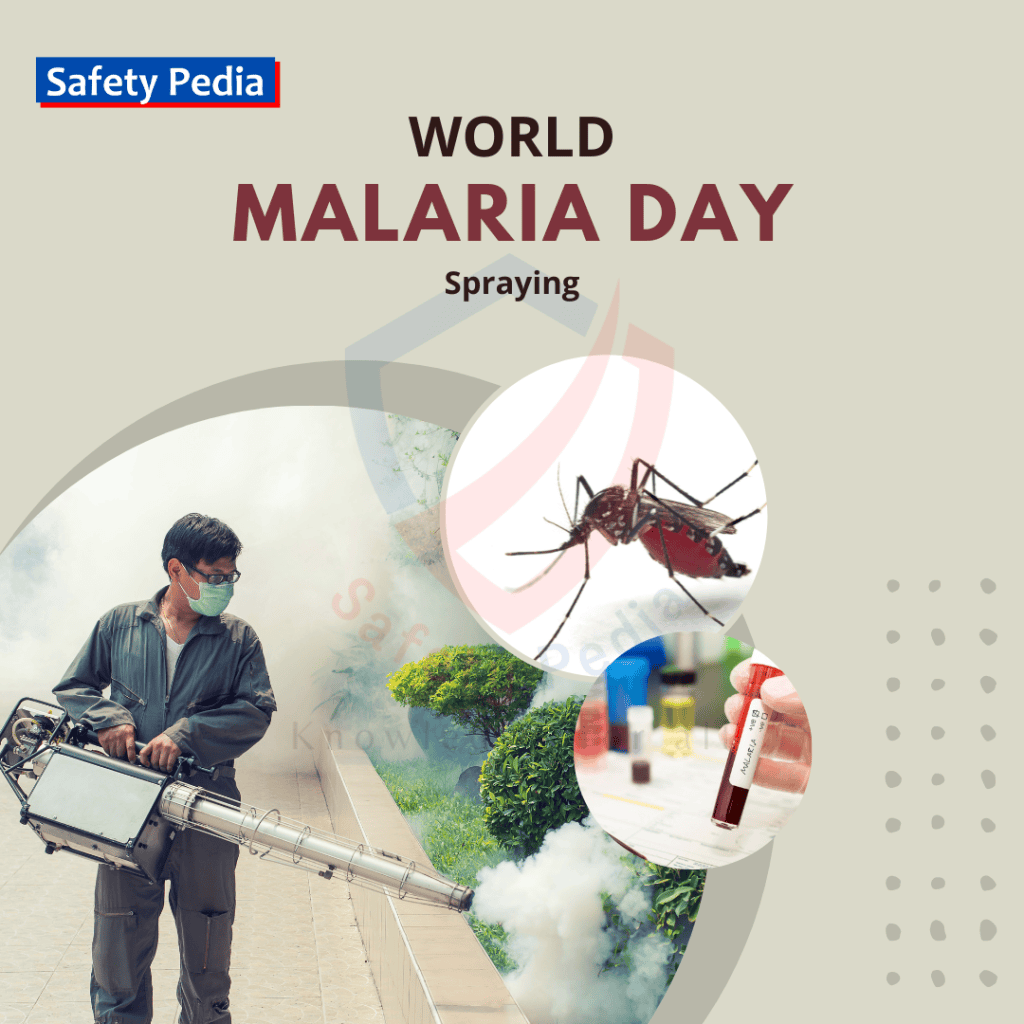
World Malaria Day initiatives and events
World Malaria Day provides an opportunity to highlight the ongoing efforts to end malaria and mobilize support for the cause. Each year, numerous initiatives and events are organized to raise awareness, advocate for action, and showcase progress made in malaria control.
These initiatives include awareness campaigns, community mobilization, educational programs, and fundraising events. Global leaders, health experts, and activists share their experiences, knowledge, and best practices in malaria control. The release of reports, research findings, and updates on the global malaria situation also marks the day.
World Malaria Day reminds us of the urgency of action and the need for sustained commitment to ending malaria. It is an opportunity for individuals, organizations, and governments to reaffirm their commitment to malaria control and explore new strategies for achieving a malaria-free world.
The Role of Public Health Infrastructure in Combating Malaria
Malaria, a life-threatening disease transmitted through the bites of infected Anopheles mosquitoes, remains a significant global health challenge. Despite the availability of effective prevention and treatment measures, the disease continues to affect millions of people, particularly in sub-Saharan Africa and South Asia. The role of public health infrastructure in combating malaria is crucial, as it encompasses the strategies, policies, and systems that underpin the delivery of healthcare services to prevent, control, and eliminate the disease.
Historically, the fight against malaria has been a testament to the importance of robust public health infrastructure. Early 20th-century strategies for vector control, such as mosquito-proofing houses, the use of larvicides, and large-scale engineering works, laid the groundwork for today’s malaria prevention efforts. These historical strategies highlight the necessity of a multifaceted approach, combining various measures tailored to local conditions to combat malaria effectively.
In recent years, health systems strengthening has emerged as a key factor in the global progress towards malaria elimination. Research indicates that the delivery of routine services and hospital capacity are strongly predictive of reductions in malaria cases, especially in high-burden countries. This suggests that investments in health systems can significantly contribute to reducing malaria cases, with potentially high returns in service delivery areas.
The World Health Organization (WHO) has emphasized the importance of health system readiness in expanding malaria programs. By addressing socioeconomic factors, enhancing surveillance, improving program coordination, and implementing targeted interventions for vulnerable populations, countries can significantly reduce malaria-related deaths. The President’s Malaria Initiative (PMI) also supports the notion that malaria control activities are most successful when countries take ownership and lead these efforts, ensuring they have appropriately skilled human resources and infrastructure to plan, implement, and monitor progress.
To achieve a world free of malaria, it is essential to identify populations at risk, cover at-risk populations with effective preventive interventions, accurately diagnose and report cases, and treat malaria patients with timely and high-quality care. Constraints in delivering essential services can hinder progress in malaria control, underscoring the need for well-functioning health systems.
Public health infrastructure plays a pivotal role in the fight against malaria. It provides the foundation for effective intervention strategies, supports the delivery of essential healthcare services, and enables the implementation of comprehensive control measures.
Strengthening health systems, therefore, remains a critical component of the global strategy to eliminate malaria. It ensures that the gains made in reducing the burden of this disease are sustained and built upon for future generations.
How individuals can contribute to ending malaria
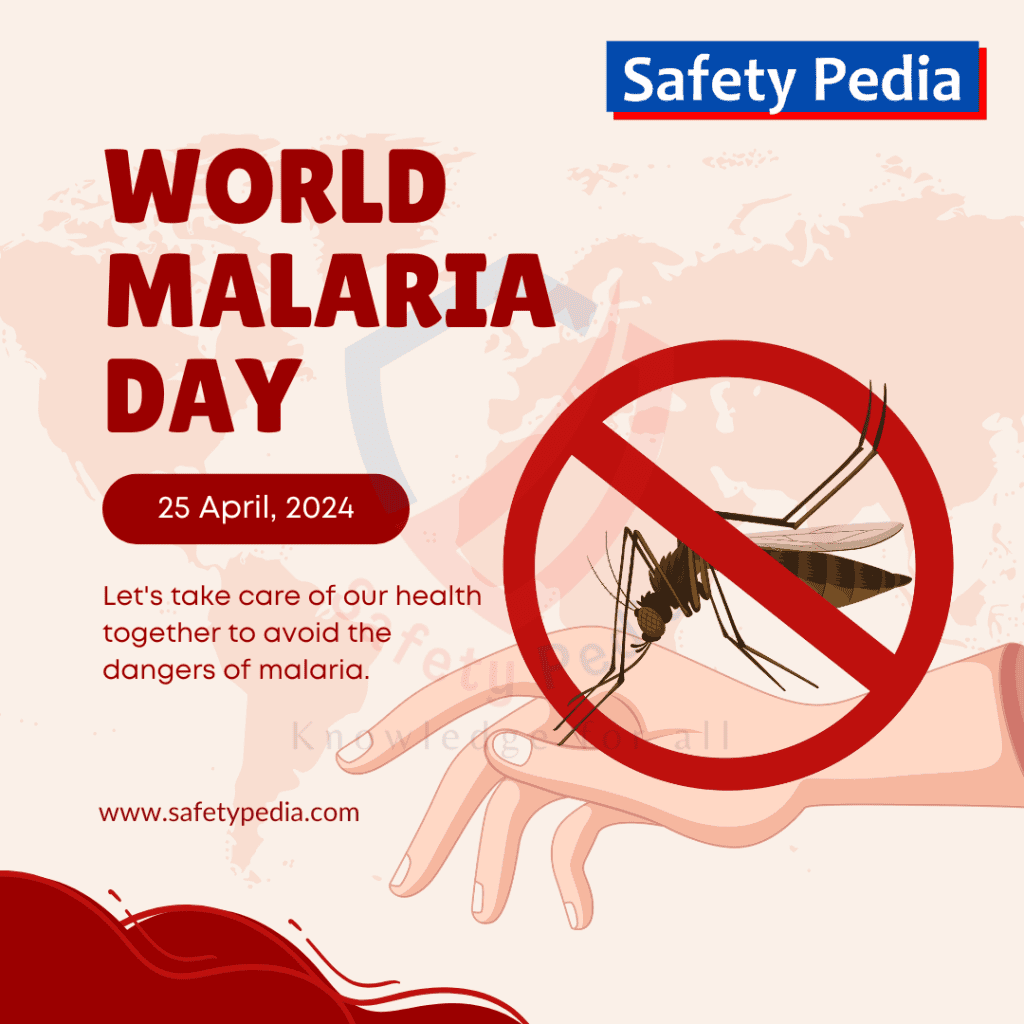
Ending malaria requires collective action, and individuals can be crucial in driving change. Here are some ways individuals can contribute to ending malaria:
- Spread awareness: Share information about malaria and its impact on social media, your community, and your networks. Raising awareness can help combat misconceptions and encourage others to take action.
- Support advocacy efforts: Join or support organizations and campaigns that advocate for increased funding and political commitment to malaria control. Write to policymakers, sign petitions, and participate in advocacy events to make your voice heard.
- Donate to organizations: Contribute financially to malaria control and prevention organisations. Your donations can support initiatives such as distributing bed nets, providing antimalarial drugs, and researching new interventions.
- Volunteer: Consider volunteering your time and skills to organizations working on malaria control. You can help with community engagement, awareness campaigns, and supporting healthcare workers in affected areas.
- Stay informed: Stay updated on the latest malaria control, research, and policy developments. You can contribute to informed discussions and make evidence-based decisions in your advocacy efforts by staying informed.
Organizations and resources supporting the fight against malaria
Numerous organizations and resources are dedicated to the fight against malaria. These organizations work on various fronts, including research, advocacy, prevention, and treatment. Some prominent organizations include:
- World Health Organization (WHO): The WHO is leading in coordinating global efforts to control and eliminate malaria. They provide technical guidance, support research, and advocate for increased political commitment and resources.
- Roll Back Malaria Partnership: The Roll Back Malaria Partnership is a global initiative that brings together governments, NGOs, and international organizations to accelerate progress against malaria. They coordinate efforts, promote collaboration, and advocate for increased funding and political commitment.
- The Global Fund to Fight AIDS, Tuberculosis, and Malaria: The Global Fund is a financing mechanism that supports programs to combat HIV/AIDS, tuberculosis, and malaria. They fund countries to scale up prevention, diagnosis, and treatment interventions.
- Malaria No More: Malaria No More is an advocacy organization that mobilizes resources, engages policymakers, and raises awareness about malaria. It focuses on innovative solutions and partnerships to accelerate progress towards ending malaria.
These organizations and many others provide a wealth of resources, information, and opportunities for individuals and communities to get involved in the fight against malaria. By supporting these organizations, you can contribute to the collective efforts to end malaria and improve the health and well-being of millions of people worldwide.
Malaria and Climate Change: Understanding the Connection
Climate change affects malaria transmission in several ways. Rising temperatures can shorten the malaria parasite’s life cycle, leading to more rapid replication and increased potential for transmission. Additionally, higher temperatures and changes in precipitation patterns can expand the habitats suitable for the mosquitoes that carry malaria, potentially introducing the disease to new regions.
Research indicates that climate shifts, particularly those affecting monsoon and pre-monsoon seasons, can alter malaria transmission, especially in regions where the disease is already endemic. For example, extreme weather events like heat waves and flooding can disrupt the standard patterns of mosquito populations and lead to spikes in malaria cases, as seen with the catastrophic flooding in Pakistan in 2022, which resulted in a significant increase in malaria incidence.
Climate Change and the Mosquito’s Advantage:
- Temperature: Warmer temperatures can shorten the malaria parasite’s life cycle within the mosquito, allowing for faster development and potentially more infectious mosquitoes. Additionally, warmer temperatures can extend the mosquito breeding season in some areas, leading to larger mosquito populations.
- Rainfall: Increased rainfall can create more breeding sites for mosquitoes, particularly in stagnant water pools. However, heavy rain can also disrupt breeding cycles in some regions.
- Humidity: Higher humidity levels can extend the lifespan of adult mosquitoes, allowing them to transmit the parasite for a more extended period.
The Complexities:
The relationship between climate change and malaria is not always straightforward. Here’s why:
- Local variations: Climate change impacts will vary greatly depending on the region. Some areas may see an increase in malaria risk, while others might experience a decrease due to changes in rainfall patterns.
- Socioeconomic factors: Poverty, access to healthcare, and housing quality also play a crucial role in malaria transmission. Communities with limited resources are more vulnerable to climate-driven increases in malaria risk.
Combating the Challenge: A Multi-Pronged Approach
Despite the challenges, there are ways to mitigate the impact of climate change on malaria:
- Strengthening existing control measures: It remains crucial to continue focusing on insecticide-treated mosquito nets, indoor residual spraying, and access to effective antimalarial treatments.
- Early Warning Systems: Developing accurate climate-based early warning systems can help predict areas at increased risk of malaria outbreaks, allowing for targeted preventive measures.
- Climate-adapted interventions: Researching and implementing new interventions like heat-tolerant mosquito nets or larvicides that work effectively in a changing climate.
- Climate-Smart Interventions: It is essential to invest in infrastructure and drainage systems that prevent water pooling and mosquito breeding. Additionally, promoting drought-resistant crops can reduce the reliance on artificial water storage, which can become breeding grounds for mosquitoes.
- Enhanced Surveillance: Robust malaria surveillance systems can identify changes in transmission patterns and guide public health responses. This includes efficient case detection, reporting, and mapping of malaria cases.
- Community involvement: It is crucial to educate communities about the link between climate change and malaria and empower them to take preventive actions.
- Investing in research: Continued research is necessary to understand the complex relationship between climate change and malaria transmission. Additionally, exploring new tools like vaccines becomes even more critical.
Why Community Engagement Matters in the Fight Against Malaria
Community engagement is the cornerstone of successful malaria control efforts. It goes beyond simply informing communities about the disease. It promotes two-way dialogue, empowers communities, and builds trust. Here’s how community engagement plays a crucial role:
1. Increased Awareness and Understanding of Malaria:
- Traditional knowledge and perceptions: Communities often have existing knowledge about malaria, but it may not always be accurate or complete. Community engagement allows for a cultural exchange of information, addressing misconceptions and clarifying the science behind the disease.
- Empowerment through education: By actively engaging with communities, health officials can tailor educational messages to local contexts and address specific concerns. This empowers individuals to take preventive measures and recognize symptoms, ultimately leading to better-informed health decisions.
2. Improved Acceptance and Uptake of Interventions:
- Addressing concerns and building trust: When communities are involved in the planning and implementing interventions like bed net distribution or indoor residual spraying, they develop a sense of ownership. This builds trust in the process and increases acceptance of these vital tools.
- Overcoming logistical challenges: Community engagement helps identify logistical barriers to intervention uptake. For example, some communities might need specific net sizes or alternative spraying schedules due to local housing structures. This feedback allows for adaptations to maximize intervention effectiveness.
3. Enhanced Surveillance and Early Detection:
- Community members as active participants: Trained community members can become valuable partners in surveillance. They can report suspected cases promptly, allowing faster diagnosis, treatment, and outbreak control measures.
- Local knowledge as a resource: Communities often possess valuable insights into seasonal trends, mosquito breeding grounds, and potential risk factors. This local knowledge can guide targeted interventions and resource allocation.
Beyond these benefits, community engagement promotes a sense of collective responsibility. Communities become invested in the fight against malaria, contributing to its long-term success.
Remember: A top-down approach, where interventions are imposed without community input, is less likely to be embraced or sustained. Engaging communities enables a collaborative spirit and empowers individuals to be active participants in protecting their health and well-being.
Successful Community Engagement Strategies for Malaria Control
Here’s a breakdown of the provided examples of effective community engagement initiatives for malaria control, highlighting their strengths and potential applications:
1. Community-Based Health Worker Programs:
- Strengths:
- Local knowledge and trust: Community health workers (CHWs) understand the local context and language, encouraging confidence and better communication with residents.
- Improved access to care: CHWs can provide essential healthcare services, diagnose malaria cases, and administer treatment closer to home, especially in remote areas.
- Educational outreach: CHWs can educate communities about malaria prevention, symptoms, and treatment options.
- Applications:
- Deploying CHWs in villages with high malaria prevalence.
- Training CHWs on malaria diagnosis, treatment protocols, and referrals.
- Enabling CHWs to conduct educational sessions and distribute mosquito nets.
2. Participatory Surveillance and Response:
- Strengths:
- Empowered communities: Involving communities in surveillance allows them to identify potential outbreaks and take preventative action.
- Early detection: Community members can report suspected cases promptly, leading to faster public health interventions.
- Increased ownership: Participation promotes a sense of ownership over malaria control efforts within the community.
- Applications:
- Training community members to recognize malaria symptoms.
- Establishing reporting mechanisms for suspected cases (e.g., hotlines, community health meetings).
- Utilizing community networks to disseminate information about outbreaks and response measures.
3. School-Based Education and Awareness Programs:
- Strengths:
- Reaching future generations: Educating children about malaria equips them with knowledge and behaviors that benefit themselves and their communities.
- Multiplier effect: Children can become advocates for malaria prevention within their families and social circles.
- Encouraging positive attitudes: Early education can create a culture of awareness and responsibility regarding malaria control.
- Applications:
- Developing age-appropriate educational materials on malaria symptoms, prevention methods, and mosquito life cycles.
- Integrating malaria education into existing school curricula.
- Organizing school-based campaigns to distribute mosquito nets and promote their use.
4. Community-Led Advocacy and Mobilization:
- Strengths:
- Local leadership: Community leaders can champion malaria control efforts and mobilize resources.
- Advocacy for change: Community voices can influence policy decisions and resource allocation at local and national levels.
- Social mobilization: Communities can organize events, campaigns, and fundraising activities to raise awareness and secure resources.
- Applications:
- Engaging community leaders in planning and implementing malaria control strategies.
- Empowering communities to advocate for improved healthcare access and sanitation facilities.
- Organizing community events to promote mosquito net usage and environmental management practices that reduce mosquito breeding grounds.
When implemented together, these community engagement strategies create a holistic approach to combatting malaria. We can achieve sustainable progress towards a malaria-free future by empowering communities, promoting knowledge, and promoting ownership.
Consequences of Increased Malaria Transmission
- Surge in Cases: Increased transmission can lead to a resurgence of malaria in areas that had previously controlled the disease or reduced its burden significantly.
- Strained Healthcare Systems: A rise in malaria cases burdens healthcare systems, especially in resource-limited regions.
- Vulnerable Populations: Children, pregnant women, and immunocompromised individuals face a higher risk of severe illness and death from malaria.
Climate change adds another dimension to the fight against malaria. However, with a multi-pronged approach that addresses the changing climate and existing vulnerabilities, we can strive to create a future where malaria is no longer a public health threat.
Conclusion and the way forward
World Malaria Day 2025 serves as a reminder of the urgent need to take action and end this deadly disease. Malaria continues to claim the lives of hundreds of thousands of people, primarily children under the age of five, and hampers economic development in affected countries. However, progress has been made, and with renewed commitment, we can accelerate efforts to end malaria.
By boosting funding for research, improving access to prevention and treatment, and increasing awareness about the importance of malaria control, we can make significant strides towards a malaria-free world. Global leaders, health experts, and individuals must come together, advocate for change, and support initiatives that drive progress.
On this World Malaria Day, let us stand united in our commitment to ending malaria. Together, we can make a difference and create a healthier future for all. Join the movement, take action, and participate in the solution. Together, we can end malaria once and for all.
References:
https://www.who.int/campaigns/world-malaria-day/2024
https://malariajournal.biomedcentral.com/articles/10.1186/s12936-018-2244-2
https://malariajournal.biomedcentral.com/articles/10.1186/s12936-020-03208-6
https://www.pmi.gov/what-we-do/health-systems-strengthening
https://www.who.int/news-room/fact-sheets/detail/malaria
https://www.mayoclinic.org/diseases-conditions/malaria/symptoms-causes/syc-20351184
The Most Dangerous Animals in the World: And What Makes Them So Fascinating!
Join Our Safety Community!
Stay informed with the latest tips and insights on occupational health, safety, and the environment.


